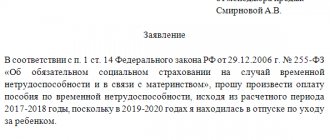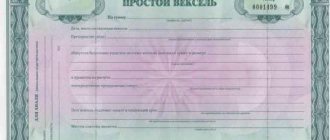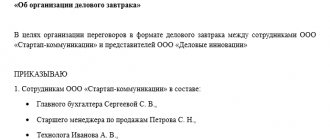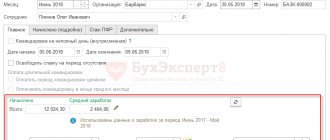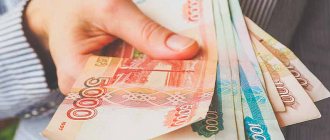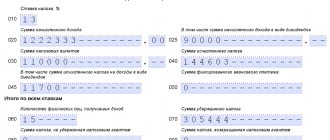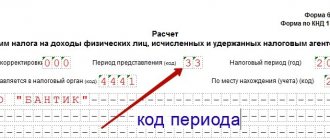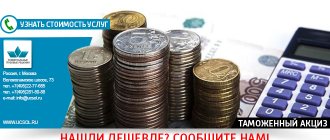How to calculate VAT from the amount
How to calculate VAT on the amount? It's not difficult: you just need to mathematically calculate the percentage. The calculation is made using the formula:
VAT = NB × Nst / 100,
Where: NB - tax base (that is, the amount without VAT), Nst - VAT rate: 20 percent (until 01/01/2019 - 18) or 10 percent.
ConsultantPlus experts provided examples of VAT calculations for sellers. Get free trial access to the system and proceed to calculations.
Rates
In Russia there are several rates of value added tax - 0, 10 and 20 percent. This is written in detail in Article 164 of the Tax Code. And for each of them there is its own VAT formula .
Thus, zero tax applies to some specific industries. For example, the space industry is included in this category. In addition, it covers those groups of goods for which there are special forms of taxation.
A reduced rate of 10 percent is provided, for example, for children's products, basic product categories, as well as medicines and medical supplies. In other cases, manufacturers and suppliers are subject to the full tax - 20%. And all this must be taken into account before calculating VAT on the transaction amount.
20% – general rate
It is used to calculate VAT on the sale of most goods, works or services (clause 3 of Article 164 of the Tax Code of the Russian Federation).
VAT rate 10%
Applies only to the sale of goods specified in lists approved by the Government (clause 2 of Article 164 of the Tax Code of the Russian Federation). This:
- foodstuffs
- childen's goods
- print media and books
- medical supplies
Zero VAT rate
0% – VAT rate for exports, international transport and other operations listed in clause 1 of Art. 164 Tax Code of the Russian Federation. You can refuse it.
The estimated rate of 20/120 or 10/110 is used in cases where the tax base includes VAT. They are listed in paragraph 4 of Art. 164 Tax Code of the Russian Federation. For example, receiving advances, withholding VAT by a tax agent, selling agricultural products purchased from citizens, assigning claims.
How to calculate VAT including
Calculating VAT as well means highlighting the tax that is included in the final amount. Here the formulas are used for calculation:
VAT = C / 120 × 20 - if you need to calculate VAT 20% (from 01/01/2019),
VAT = C / 118 × 18 - if you need to calculate VAT 18% (until 01/01/2019),
VAT = C / 110 × 10 - if the tax rate is 10%,
Where: C is the amount including VAT.
See also “ What is included in the list of goods subject to VAT at a rate of 10%? »
ATTENTION! This calculation does not mean applying estimated rates of 20/120 (18/118) or 10/110 - it is simply a way to separate the tax from the total.
Read more about settlement rates in this article .
VAT benefits
There are two options for benefits when a company does not pay VAT - taxation at a 0% rate and tax exemption. The difference is that with a zero rate, you can engage in exports and international air transportation and claim input VAT as a deduction. This means that the taxpayer must still issue invoices, fill out and submit VAT returns. Those who are exempt from paying tax do not file a return and are not entitled to claim deductions.
Some individual entrepreneurs and companies are completely exempt from VAT, others - for certain transactions.
Not required to pay VAT:
- IP on UTII, simplified tax system and PSN;
- participants of the Skolkovo project;
- Individual entrepreneurs and companies are subject to any tax system if their revenue over the last three months is less than 2 million rubles. To obtain such an exemption, you will have to submit additional documents.
Companies on the Unified Agricultural Tax operate under special conditions. From 2022, they pay VAT if they earned more than the established amount in a year:
- 90 million rubles for 2022;
- 80 million rubles for 2022;
- 79 million rubles for 2022, etc.
To receive benefits for the Unified Agricultural Tax, you need to submit documents for exemption. Otherwise, you will have to pay VAT on any income.
Certain transactions are also exempt from VAT:
- cash loans;
- sale of medical goods and services;
- transportation of passengers;
- stock trading.
A complete list of transactions exempt from VAT is contained in Art. 149 of the Tax Code of the Russian Federation.
There is also a benefit for exempting sales from VAT for Russian IT companies. In order to take advantage of the benefit, developers must include their software in the register of Russian computer programs.
When benefits don't apply
When importing goods.
If an individual entrepreneur imports goods from abroad using a special regime, he will have to pay VAT.
If an invoice is issued with VAT.
Special regime officers can, at the client’s request, issue him an invoice including VAT. But then the individual entrepreneur will have to file a declaration at the end of the quarter and pay this tax to the budget.
Example of VAT calculation
Using the above formulas, we will analyze how to correctly calculate VAT (in excess of the amount, including), using examples.
Example 1
LLC "X" sells a batch of concrete blocks in the amount of 100 thousand pieces. at a price of 55 rub. a piece. The VAT rate is 20% (clause 3 of Article 164 of the Tax Code of the Russian Federation), tax is not included in the price. How to calculate VAT 20% and the final cost of the shipment including tax?
- First, we determine the cost of the batch without VAT (tax base):
55 rub. × 100,000 pcs. = 5,500,000 rub.
- Let's calculate VAT from the amount:
5,500,000 × 20/100 = 1,100,000 rub.
- Let's calculate the amount including VAT:
5,500,000 + 1,100,000 = 6,600,000 rub.
- Or you can determine the total amount immediately, without first calculating the tax:
5,500,000 × 1.20 = 6,600,000 rub.
Accordingly, the following must be indicated in settlement documents and invoices:
- cost without VAT - 5,500,000 rubles,
- VAT 20% - RUB 1,100,000,
- total including VAT - 6,600,000 rubles.
Example 2
According to the price list of X LLC, the price of a curbstone including VAT is 240 rubles. for 1 piece The buyer ordered a batch of 10 thousand pieces. Let's calculate VAT 20%.
- First, let's determine the final cost of the batch:
240 rub. × 10,000 pcs. = 2,400,000 rub.
- We will calculate VAT including:
2,400,000 / 120 × 20 = 400,000 rub.
- The amount remaining excluding VAT:
2,400,000 – 400,000 = 2,000,000 rub.
It can also be found without prior allocation of tax:
2,400,000 / 1.20 = 2,000,000 rub.
You can check the correctness of the calculation by charging VAT on the received value without tax:
2,000,000 × 20/100 = 400,000 rub.
Accordingly, the following must be indicated in settlement documents and invoices:
- cost without VAT - 2,000,000 rubles,
- VAT 20% - 400,000 rubles,
- total including VAT - 2,400,000 rubles.
For information on how to reflect the calculated VAT amount in the VAT return and in accounting, see the Ready-made solution from ConsultantPlus. Get trial access to K+ for free.
Results
As you can see, it is not difficult to calculate VAT on top or VAT included. The main thing is to remember the calculation formulas and use the correct tax rate.
See also the article “Formula for calculating VAT at a rate of 20% of the amount.”
Scope of application of the calculator
The calculator is always useful when there is a need to calculate the cost of goods or services, or to calculate the percentage of profit after paying VAT.
Value added tax is a mandatory payment, considered an indirect tax, subject to credit to the budget, and included in the final cost of a product or service. Accordingly, VAT calculations are a mandatory attribute of the activities of any industrial, commercial or individual enterprise. VAT reports are mandatory documents that must be submitted quarterly to the tax authorities.
In addition to the organizations already listed, VAT payers are:
- Commercial enterprises-importers or distributors importing foreign-made goods into the territory of the Russian Federation.
- Tax agents preparing VAT invoices.
- Individuals and legal entities operating under concession and commission agreements, as well as providing trust management services or working under joint activity agreements.
Exemption from VAT
Enterprises and organizations that meet both of the following conditions can obtain exemption from VAT, in accordance with the provisions of Article 145 of the Tax Code of the Russian Federation:
- Those who have received a profit for three months of entrepreneurial activity in the amount of less than 2,000,000 rubles (excluding VAT);
- Those who did not carry out financial and commercial transactions related to the sale of goods subject to excise duties.
At the same time, paragraph 5 of Art. 145 of the Tax Code of the Russian Federation prescribes the loss of the right to exemption from VAT immediately after any transaction with excisable goods, even if separate accounting of transactions is maintained.
A mandatory condition for enterprises receiving exemption will be to maintain a sales book. Extracts from the ledger must be submitted quarterly to financial authorities to confirm the enterprise's right to use the exemption. Simultaneously with the extract, an extract from the balance sheet must also be submitted to the Federal Tax Service, indicating that the maximum allowable profit for exemption from VAT has not been exceeded. This condition is dictated by the Order of the Ministry of the Russian Federation for Taxes and Duties dated July 4, 2002.
Common Questions
How to calculate VAT payable?
VAT payable is calculated using the formula:
VAT payable = VAT accrued - VAT deductible + restored VAT
The amount of VAT accepted for deduction includes:
Also included in the deductible VAT amount is VAT that is deductible on construction and installation work performed for one’s own consumption.
Read more about the procedure for accounting and deducting VAT during the construction of fixed assets here.
What is restored VAT?
Cases of VAT recovery are regulated by clause 3 of Art. 170 Tax Code of the Russian Federation:
Read about the VAT recovery procedure in this article.
How to determine the safe amount of VAT deduction?
In order not to raise questions from cameramen, we recommend calculating the safe share of deductions when drawing up a declaration. To do this, you need to divide the amount of input VAT by the amount of accrued VAT and multiply by 100%.
If the share of deductions exceeds 89%, the fiscal authorities may become interested in the company and come with an on-site inspection.
Our experts spoke in more detail about the safe share of VAT deductions here.
You can find more complete information on the topic in ConsultantPlus. Free trial access to the system for 2 days.
Tax deduction for VAT
The company has the right to reduce the amount of VAT tax charged to it by suppliers. This is called a tax deduction. You can apply for it in the following cases:
- VAT was presented by suppliers for goods, works or services.
- The entrepreneur paid VAT to customs when importing goods from abroad.
- The tax was presented by the sellers of property rights.
An individual entrepreneur or a company claiming a deduction must document the fact of the transaction, the purchase of goods for transactions on which VAT is charged and the registration of goods. Then the transaction will not arouse suspicion from the tax authorities.
Documents for VAT deduction
In order to receive a deduction, you need to prepare a package of documents and send it to your VAT return electronically. The declaration must indicate input and output VAT and the amount of tax payable.
The package of documents includes:
- invoices from suppliers;
- primary documents from suppliers that confirm that the transaction took place - invoices, certificates of completed work, etc.;
- documents confirming the registration of goods, works or services - acceptance certificates, extracts from KUDiR.
Invoices from suppliers must be recorded in the purchase ledger, and invoices issued by yourself must be recorded in the sales ledger.
Then the tax office will check the transaction data. If they do not cause suspicion, nothing more needs to be done. If the inspector has questions, he will require supporting documents. Lack of documents may result in an on-site inspection.
How is VAT payable calculated?
VAT payable to the budget is calculated at the end of the quarter: the calculated and restored VAT for the quarter is summed up, the result is reduced by deductions (clause 1 of Article 173 of the Tax Code of the Russian Federation).
EXAMPLE:
During the quarter, VAT was calculated on advances of 2 million rubles, on shipments of 3 million rubles. Deduction of input VAT 1.5 million rubles, VAT on advances – 2.5 million rubles.
- The total amount of calculated VAT is 5 million rubles: 2 million rubles. from advances plus 3 million rubles. from shipment.
- The total amount of deductions is 4 million rubles: 2.5 million rubles. VAT on advances, 1.5 million rubles. – input VAT.
- The amount payable at the end of the quarter is 1 million rubles.
How to isolate tax
There are often cases when the amount of VAT should not be added to the total cost of goods, works or services, but rather subtracted. For example, it may be necessary to isolate VAT in situations where the seller receives an advance payment for the goods. Then there is a calculation formula:
S × RS VAT = VAT where S is the total amount from which VAT must be deducted;
“RS VAT” is the so-called calculated rate. It comes in two types: 20/120 and 10/110. Depending on whether the tax is calculated at a full rate or at a reduced rate (20 or 10%).
Again, let’s look at how to calculate VAT using a specific example. To begin with, the case is when goods, services and work are taxed at the full rate - 20%.
EXAMPLE
It is necessary to calculate VAT for the amount of 236 thousand rubles that the seller receives as an advance payment. To do this, we multiply 236,000 by the tax rate of 20/120. And he gets the final figure - 39,333 rubles. This will be the amount of VAT included in the prepayment.
We will calculate the same for the reduced rate of 10%. Let us now take, for example, the amount of 110 thousand rubles, which was received as an advance. VAT in it will be determined if 110,000 is multiplied by 10/110. The total amount will be 10 thousand rubles.
Also see “How to allocate VAT”.
Another example: A product worth 200,000 rubles. plus VAT 20% shipped after 100% prepayment.
- The amount of VAT on the date of receipt of the advance is 40,000 rubles. (RUB 240,000 x 20/120).
- The amount of VAT on the date of shipment is 40,000 rubles. (RUB 200,000 x 20%).
Calculations at a reduced rate
There should also be no problems in calculating VAT at a rate of 10 percent. The formula to be applied is absolutely identical to that for 18 percent. The only difference is that in place of the tax rate you need to put a “ten”.
Therefore, if the task is how to calculate VAT at a rate of 10%, we offer the formula:
S × 10% = VAT As in the previous case, S – here also means the total amount of goods sold, works or services owned by the company. And it also does not initially take into account value added tax.
Let's give a more clear example of how to calculate VAT from the transaction amount.
EXAMPLE
The total amount of goods, services or work sold by a merchant is 70 thousand rubles. Applying the formula, that is, multiplying this figure by 10 percent, we get an amount equal to 7 thousand rubles. This will be the final tax amount. As you can see, calculating VAT is not difficult at all.
